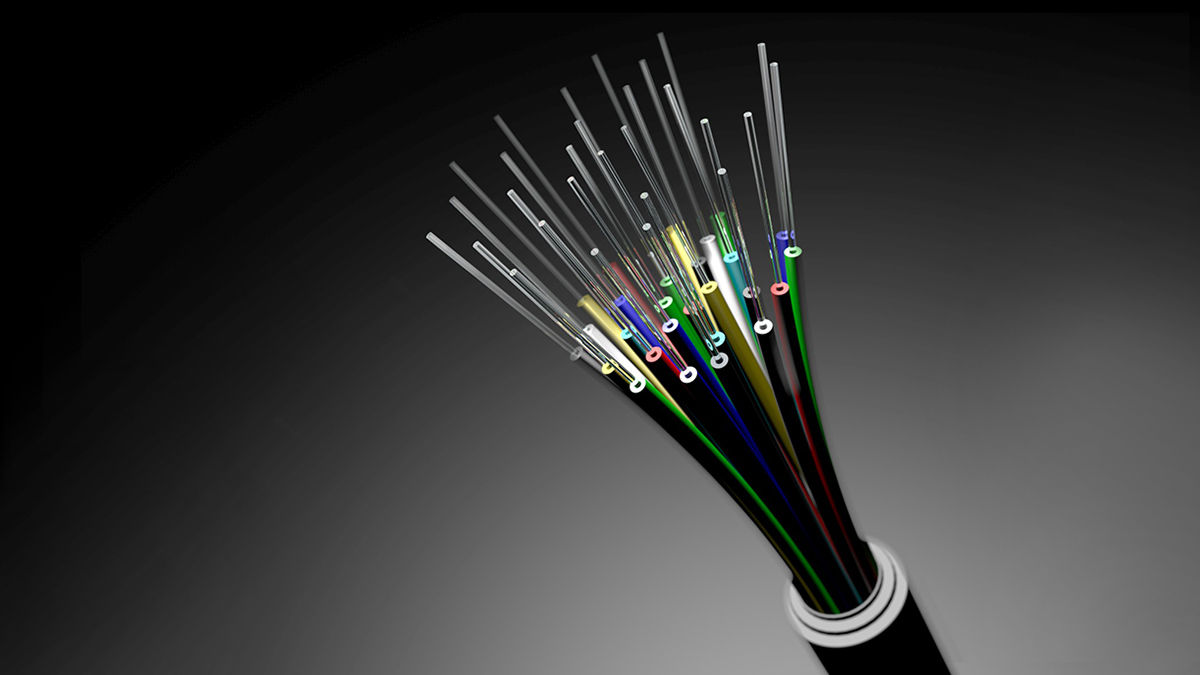Thunderstorms rumble, clap, and roll across the sky, shaking windows and scaring pets. As the acoustic waves travel from the air to the ground, they create seismic waves. Researchers have now shown that these “thunderquakes” can be detected by buried fiber-optic cables and used to image the upper few meters of the subsurface. The method could help scientists identify unseen, shallow hazards such as sinkholes, especially in urban areas where seismometers might not be available.
Distributed acoustic sensing (DAS) methodology monitors vibrations and takes advantage of fiber-optic cables installed underground. Within a cable are long glass tubes that carry pulses of laser light, transmitting data across cities and oceans. Some of the strands are used for communications, but some fibers are considered “dead” and not in use. These strands can be used for DAS systems.
“Our computer, what we call the interrogator device, listens for all these little, tiny reflections off of imperfections in the fiber.”
As a laser pulses signals down the cable, the light reflects off imperfections, air bubbles, and dust within the glass. “Our computer, what we call the interrogator device, listens for all these little, tiny reflections off of imperfections in the fiber, and it learns the normal state [of the cable],” said Nolan Roth, a geophysicist doctoral student at Pennsylvania State University and lead author of the paper. The result is a sort of map of imperfections.
Any seismic wave that shakes the ground will also affect buried fiber-optic cables. As a wave hits the cables, the system stretches and compresses, changing the position of the imperfections. The interrogator can see those changes, and the new study shows that with some calculations, scientists can figure out the characteristics of a passing seismic wave.
Roth and his colleagues divided the more than 4,200 meters of fiber-optic cables in a DAS array beneath Pennsylvania State University into segments and measured imperfections every few meters. They looked at how hundreds of thunderquake waves hit different parts of the cable.
Underground Imaging
Seismometers measure three directions of motion: two horizontal and one vertical. DAS arrays record seismic waves as compression and stretching of the cable in only one direction, said Roth, “which makes it very difficult to figure out what kind of waves you’re looking at.”
To tease out more information about the waves, Roth and colleagues tracked how different angles between the cable length and the orientation of the incoming wave produced different signal amplitudes in the cables. They modeled how such an acoustic wave made by a thunderquake would enter the ground and turn into a seismic wave and how it would intercept the DAS array.
Their modeling revealed how the cable imperfections moved and the type of seismic wave that was produced. The researchers published their results in the Bulletin of the Seismological Society of America.
Understanding what type of wave is rumbling through the ground allows researchers to image the subsurface structure. Thunderquake waves behave like regular seismic waves—they bounce when they reach a boundary, such as one between rock and an empty space in a sinkhole or basement or the top of the water table. Scientists can map out where these bounces occur below the surface to determine where boundaries lie.
The abundance and coverage of fiber-optic cables within an urban setting means there are lots of opportunities to use DAS to reveal underground features, what Roth calls “urban seismology.”
The study is “a good example of how this novel sensing technique (DAS) can provide new insights into the physics of seismic phenomena and even the interaction between atmospheric processes and the underground.”
With DAS, one cable can act like tens of thousands of seismic sensors, an array that is unmatched with conventional seismometers, said Verónica Rodriguez Tribaldos, a geophysicist at the German Research Center in Potsdam who was not involved in the study.
At the moment, DAS data from thunderquake waves can help researchers see about 10 meters deep, depending on the subsurface conditions, Roth said. The team had success mapping a few hundred meters laterally from the cables, he added, but more work is being done to understand how to get the best resolution.
The study is “a good example of how this novel sensing technique (DAS) can provide new insights into the physics of seismic phenomena and even the interaction between atmospheric processes and the underground,” Rodriguez Tribaldos noted.
“A big bonus of having this fiber-optic cable is we can use it to do urban seismology and detect the sinkholes that could really cause some damage to roads and sidewalks,” Roth said.
Rodriguez Tribaldos agreed and added it could also be used for continuous monitoring of processes that could cause changes in seismic velocities in an area, such as groundwater fluctuations.
—Sarah Derouin (@Sarah_Derouin), Science Writer


